Welcome to a deep dive into the tactical intricacies of Inter Milan under the guidance of their head coach, Simone Inzaghi. In this analysis, we dissect the strategic brilliance that shapes Inter’s style of play, from defensive solidity to offensive flair. As Inzaghi orchestrates his team in pursuit of success, we unravel the key formations, player movements, and strategic decisions that define Inter Milan’s approach on the pitch. Join us on a journey through the tactical landscape of one of Italy’s football giants, exploring how Simone Inzaghi has left an indelible mark on Inter’s playing philosophy.
Build-up
Low Build-up
In the low build-up, Inzaghi sets his team up in a 3-1-5-2 formation, with the central center-back pushing up, playing as a number six, and the goalkeeper playing between the remaining center-backs.
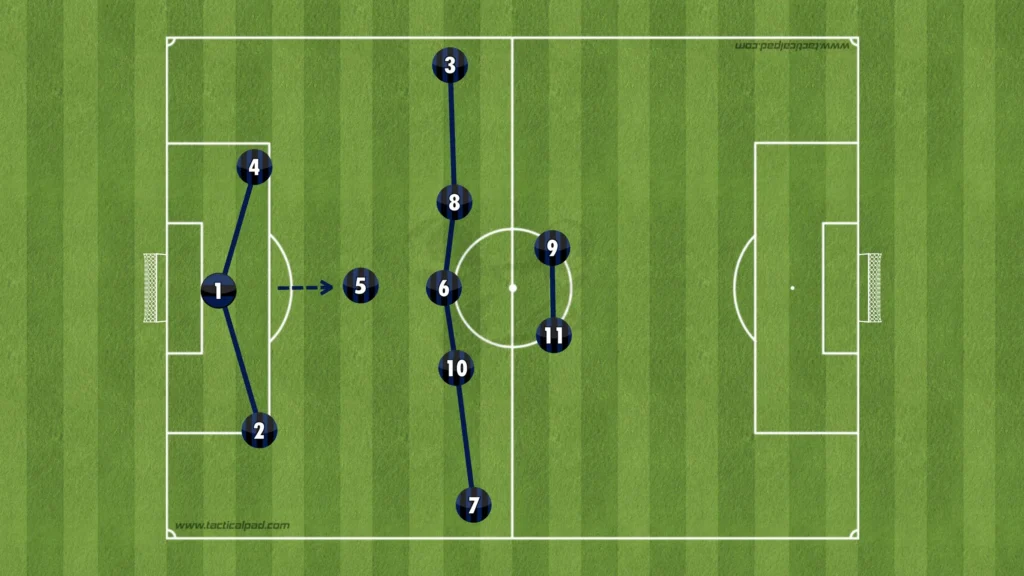
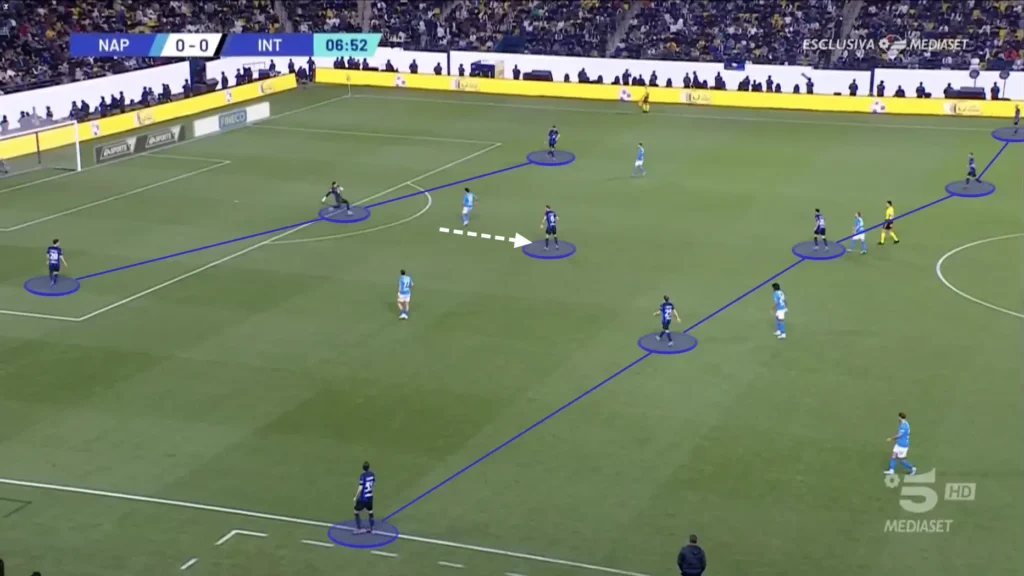
Follow Pressure
A tool for the Inter players in playing past the opposition in the build-up is to follow the pressure. This means running into the space that a pressing player is leaving behind. The space that opens is often the one behind the pressing fullback who pushes up on the Inter wing-back. The attacking midfielder runs into the open space and receives a pass from the wing-back. Here, the Juventus center-back pushes up on the Inter midfielder, allowing Inter to follow the pressure again. The striker runs into the open space and receives a pass from the midfielder, creating a dangerous attacking opportunity for Inter.
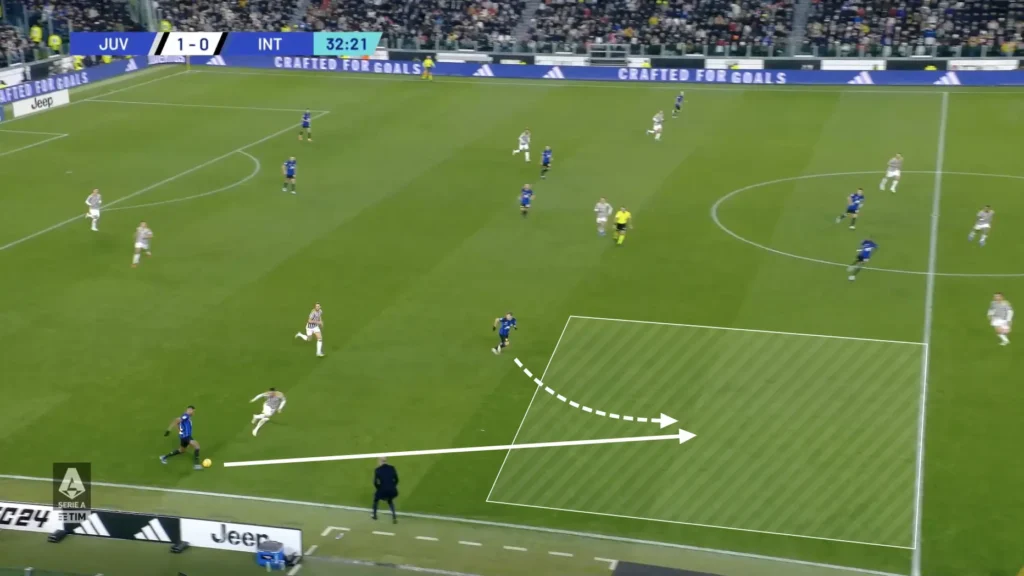
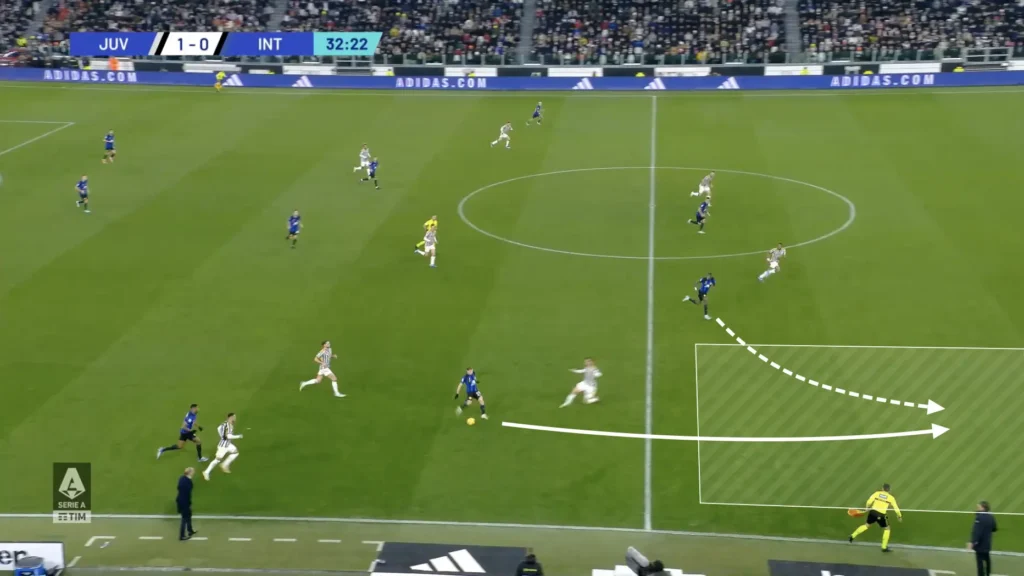
High Build-up
In the high build-up, Inzaghi’s Inter sets up in a 1-3-1-4-2 formation, the same as in the low build-up, with the central center-back dropping back into the backline:

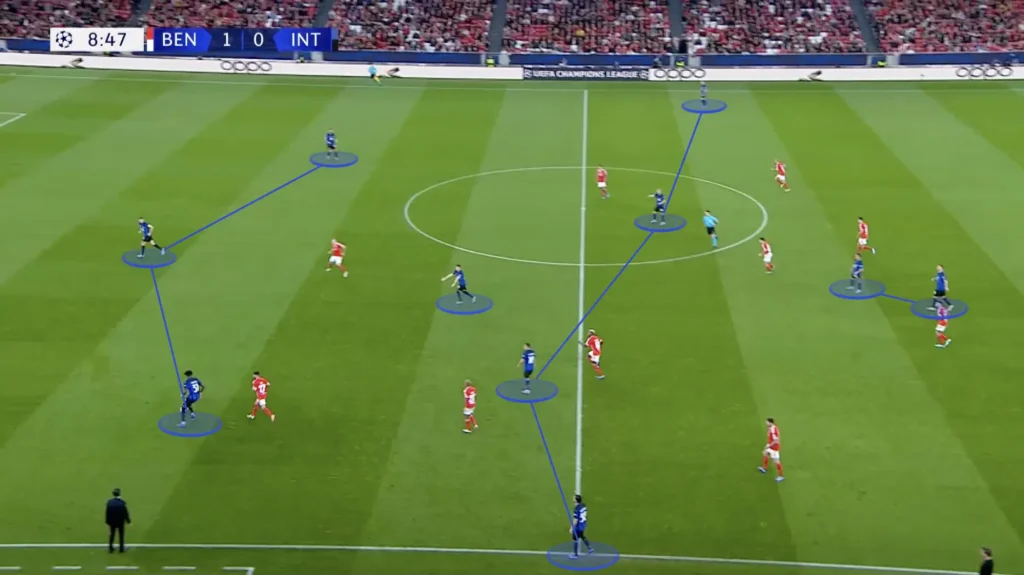
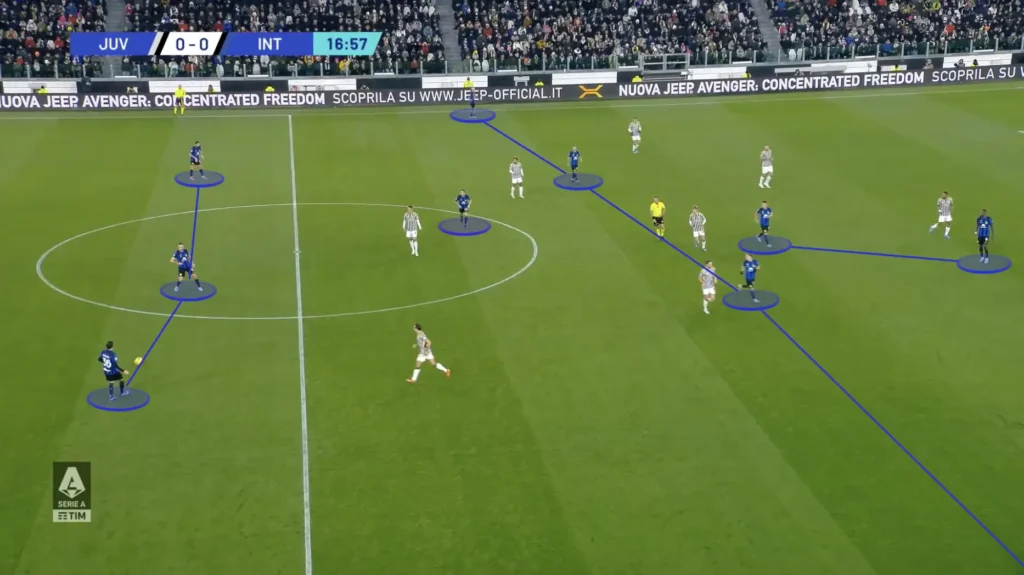
Center-backs Joining the Attack
Inter are good at incorporating many players into the attack and creating numerical advantages in the final third. One way that they do this is with offensive runs from the center-backs. The wide center-backs often make underlapping runs, creating questions for the opposition and more unpredictability in attack.
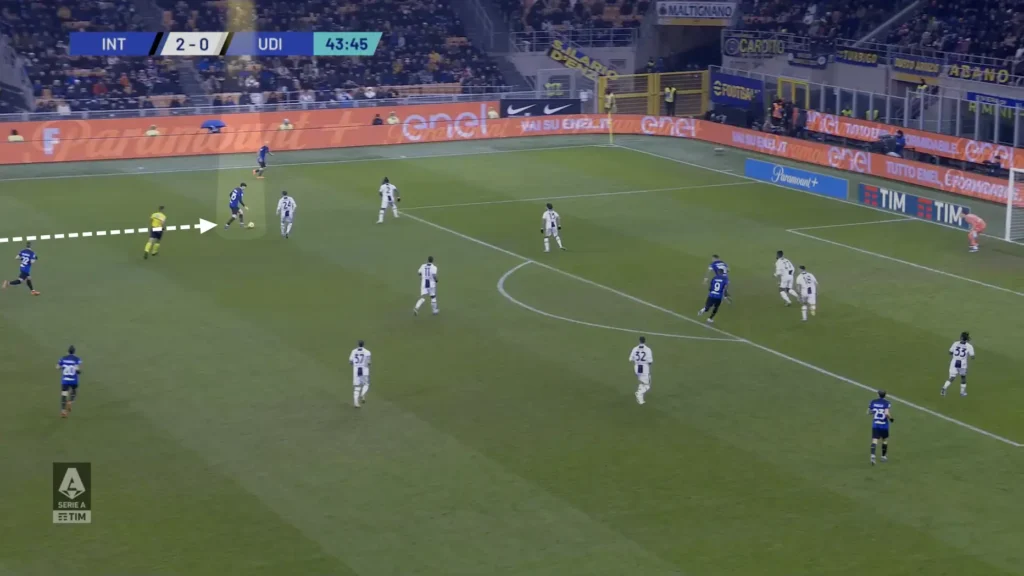
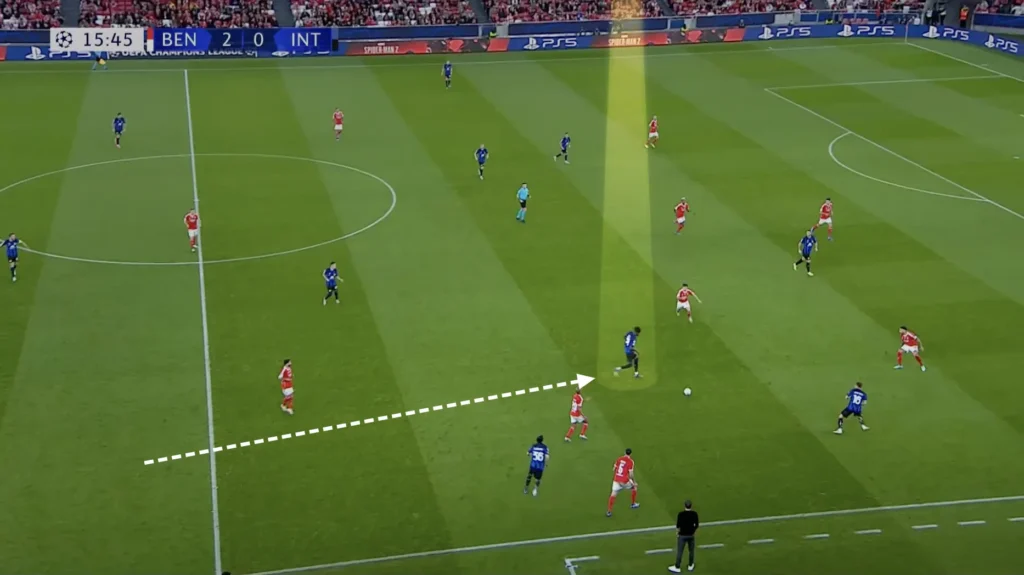
Striker Teamwork
Another aspect of Inter’s successful build-up is the partnership and constant teamwork between the strikers. One striker often drops while the other stays high, pinning the center-backs. This creates space for the dropping striker between the lines, allowing him to get the ball, turn and attack the backline.
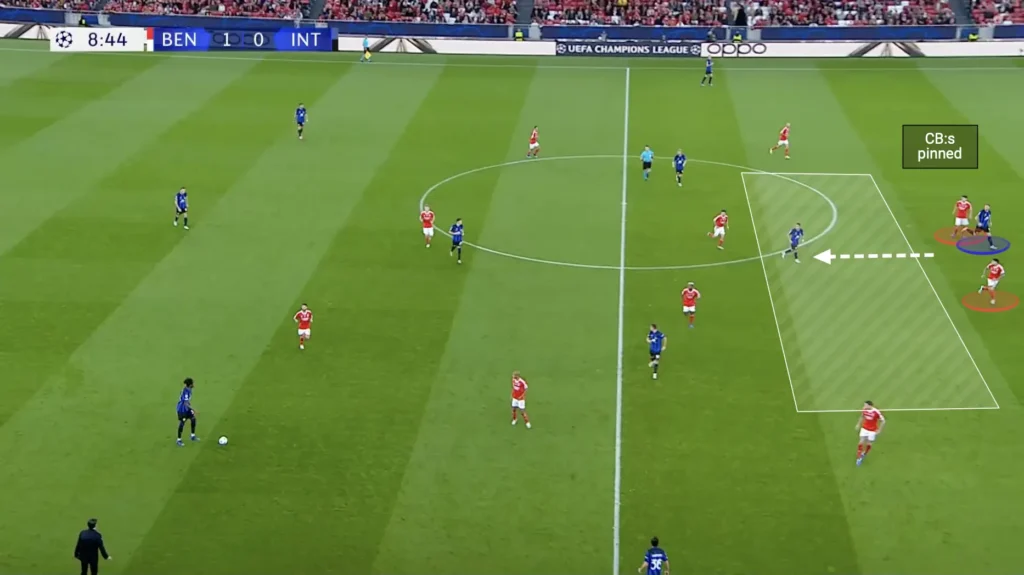
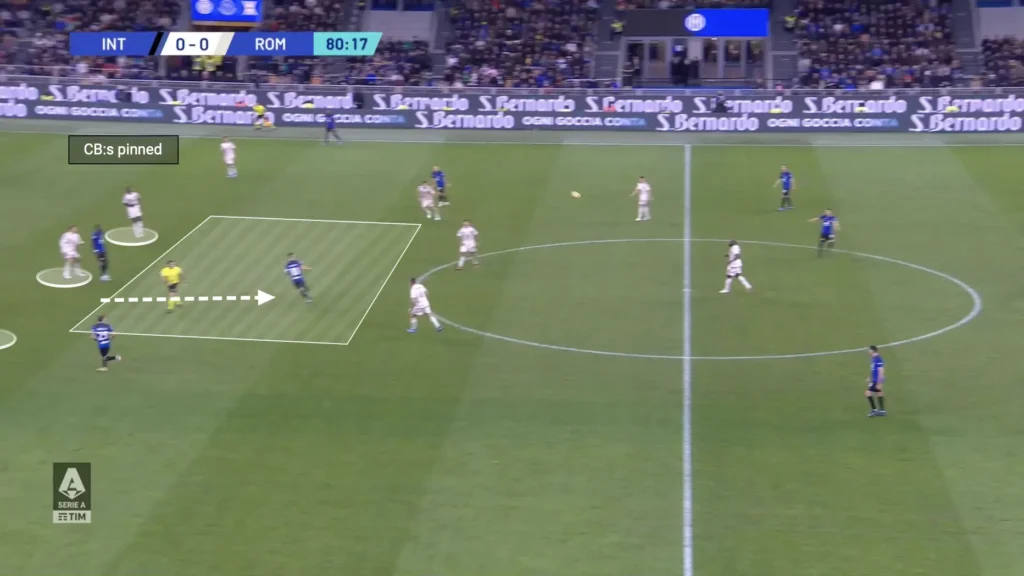
If the center-back pushes up on the dropping striker, a massive space opens up for the other striker to attack and receive a through-ball from backline or midfield.
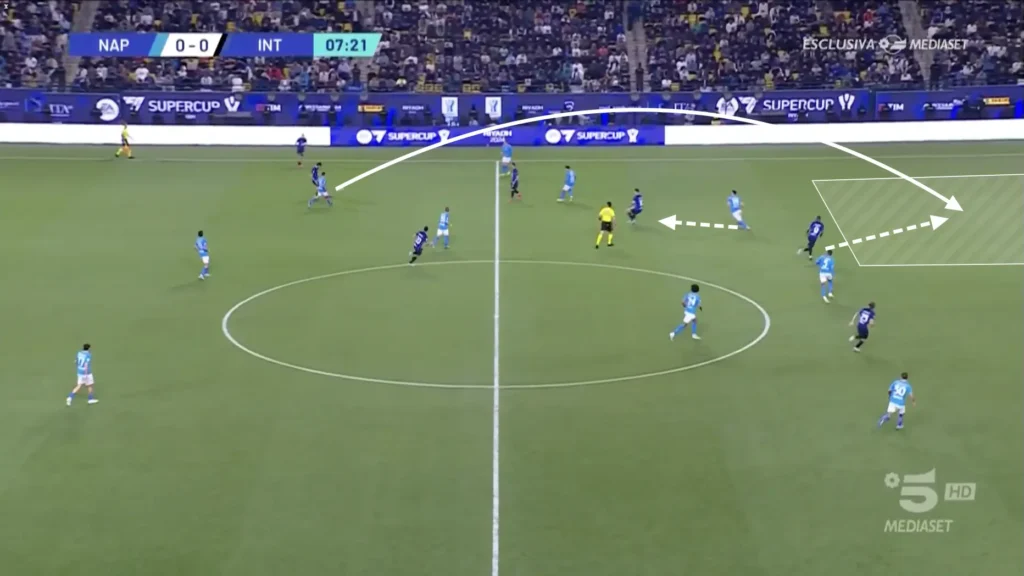
Many Players in the Box
The attacking midfielders also look to make runs into the box when the ball is in the final third, often getting four or five players into these areas to create overloads. The numerical advantages in the box force the defending team to make decisions and leave some players open. Inzaghi also positions many players outside the box, ready for the second-balls and cut-backs.
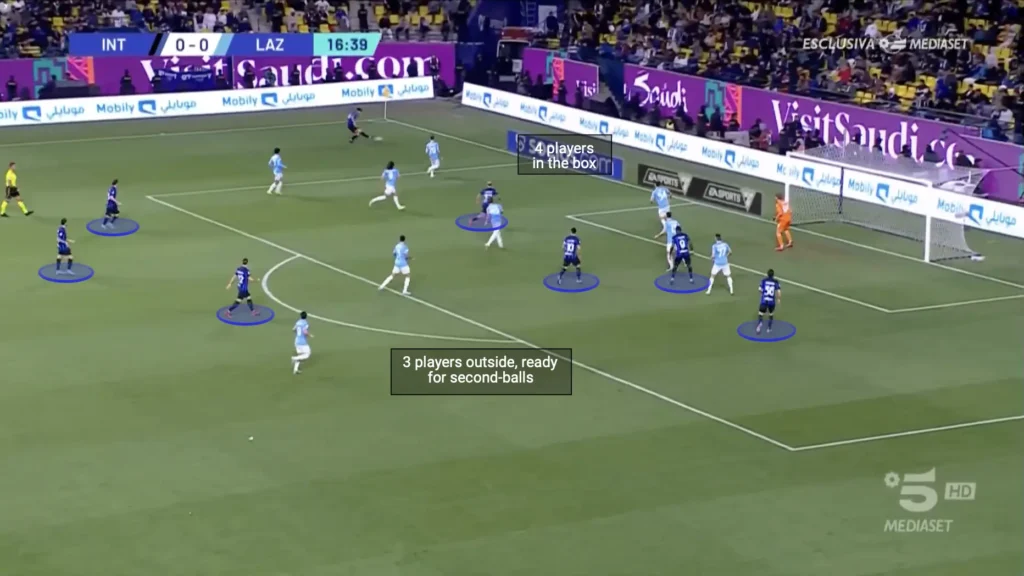
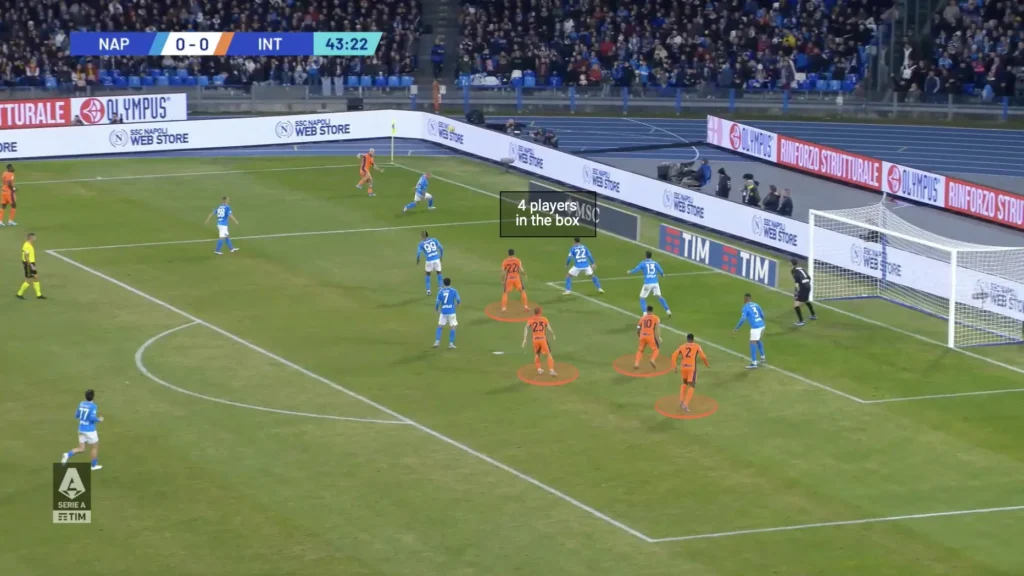
Back Post
Inter scores many of their goals from crosses where they run at the back post. Staying on the blindside of defenders makes it difficult for them to know exactly where you are while you know exactly where they are. The Inter strikers, therefore, often position themselves at the back post in crossing situations to have complete control of their defender. The back post is where the space is, and the center-back’s lack of vision often makes it uncontested. In addition, the player defending that area is usually the fullback, who presumably will be a weaker aerial defender than the center-backs.
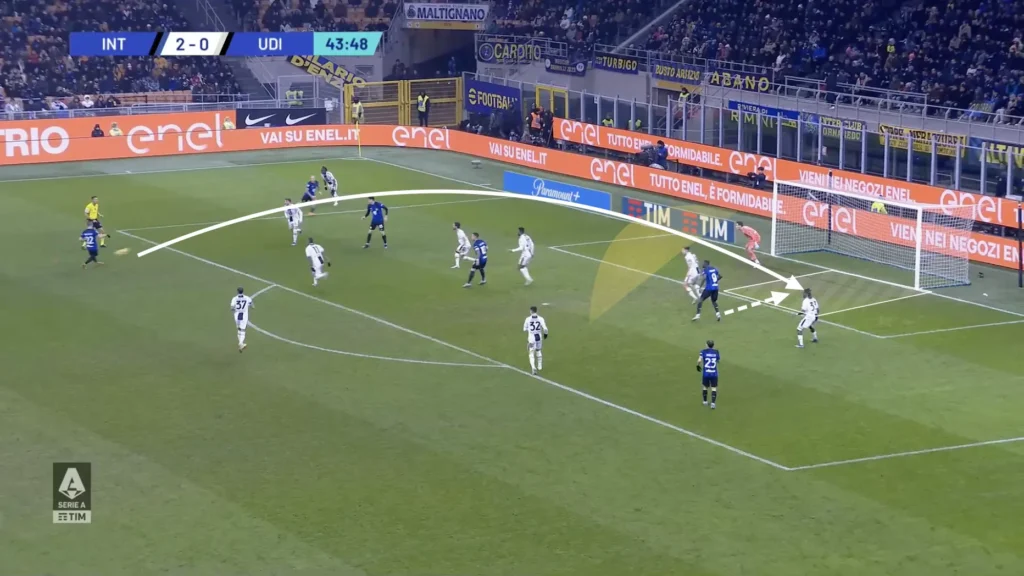
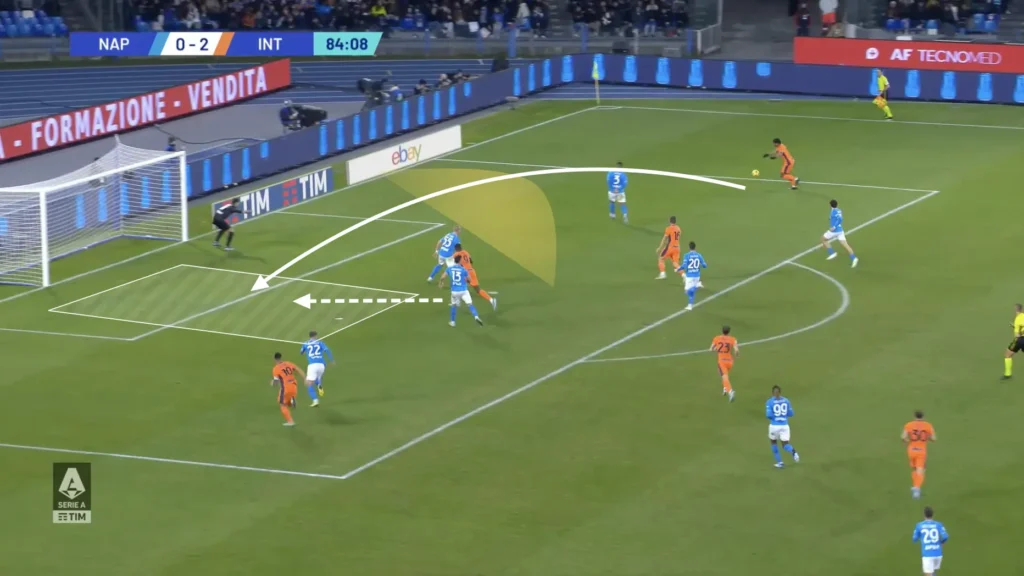
Change of Formation
Inter often rotate in their build-up, creating new formations to confuse opponents. They also adapt to their opponent’s formation to create numerical advantages in different areas, allowing them to beat the defense and score more goals.
Here, a central midfielder pushes into the forward line, creating a 1-3-4-3 formation.
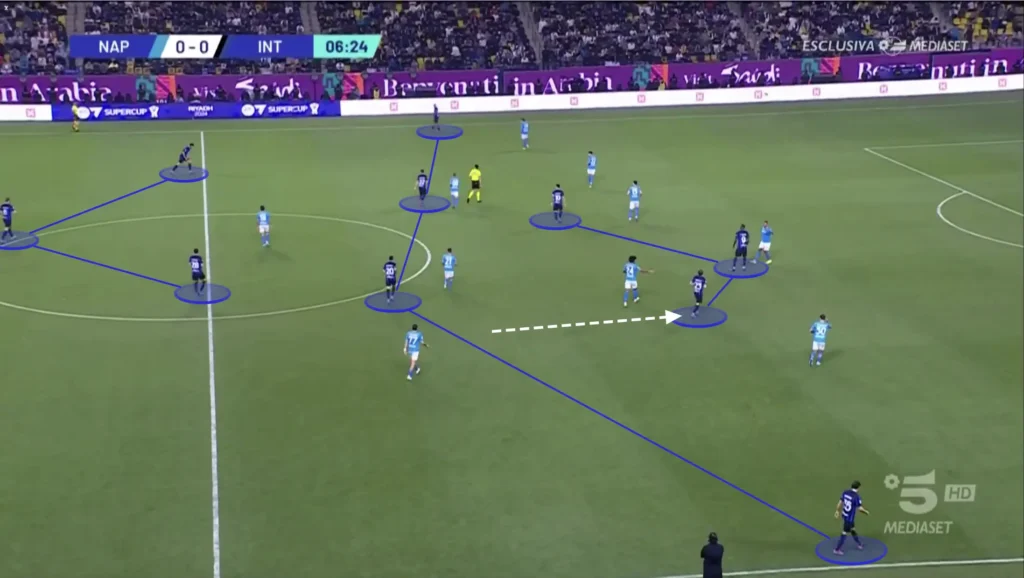
Here, the number six drops into the backline to create a 1-4-4-2 formation. They do this because Juventus is defending with three players in the first line, and Inter’s four players can beat the line more often than they would have with 3.
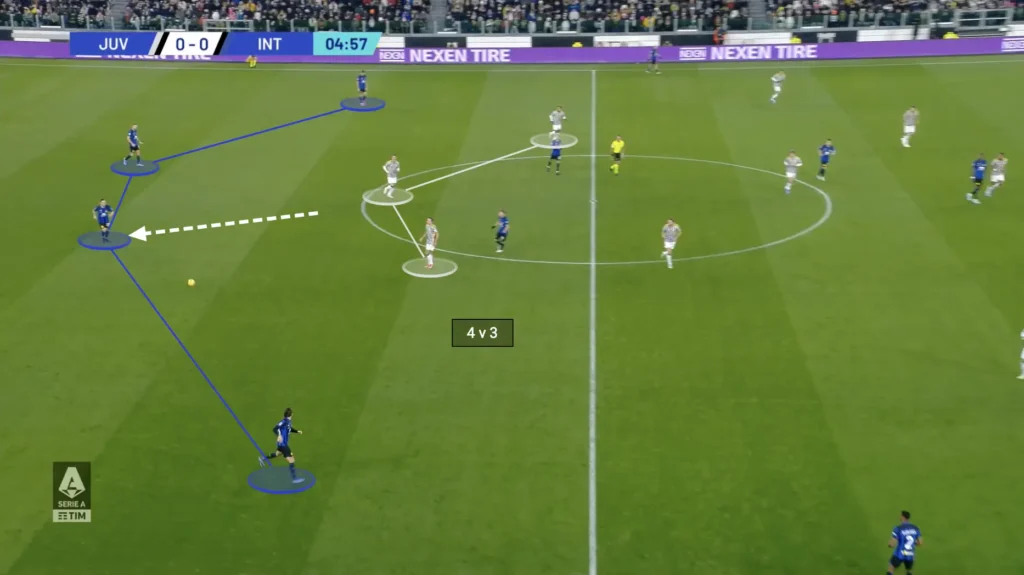
Defending
Low Press
In the low press, Inzaghi uses a 1-5-3-2 formation. They look to set up in a low-block, always trying to stay compact while closing the center, forcing the opposition out wide.
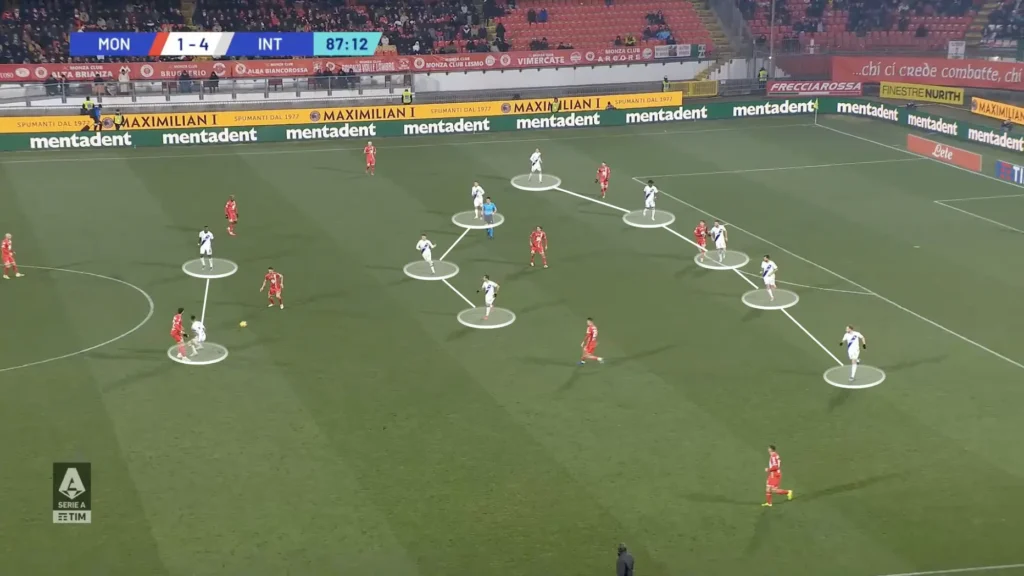
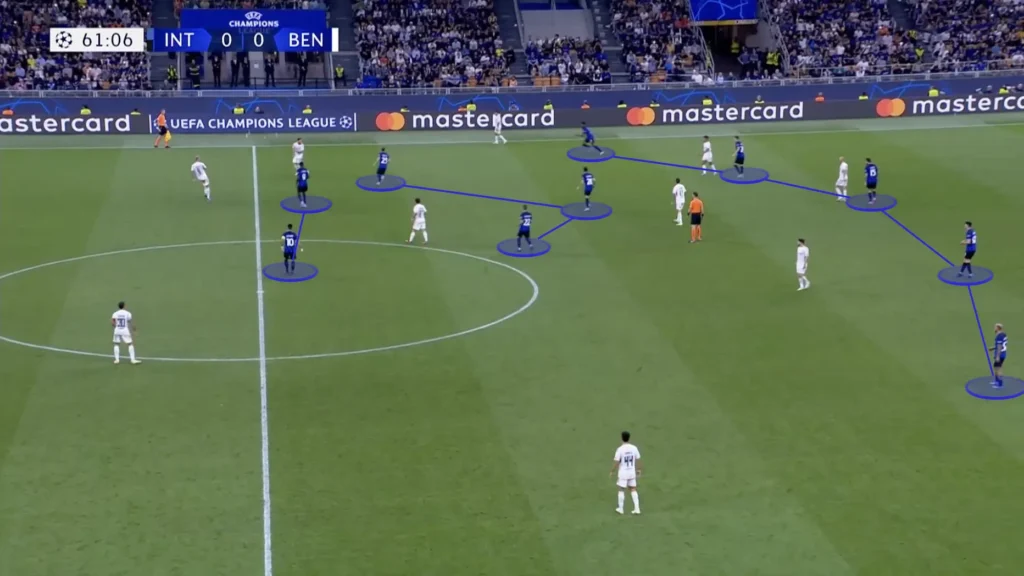
Squeezing the Pitch
Inzaghi’s Inter looks to squeeze the pitch when defending. This means constantly pushing the team up as much as possible in their rest-defense. Every time the opponent plays a slow, sideways pass or a back pass, Inter’s first line of pressure pushes up, with the rest of the team following to stay compact. When the next pass comes, they push up even more, forcing the opponent back even more. They do this because it pushes the opponent further away from Inter’s goal, making it harder to create chances. Squeezing the pitch when possible is crucial for teams who do not necessarily look to always be in possession.
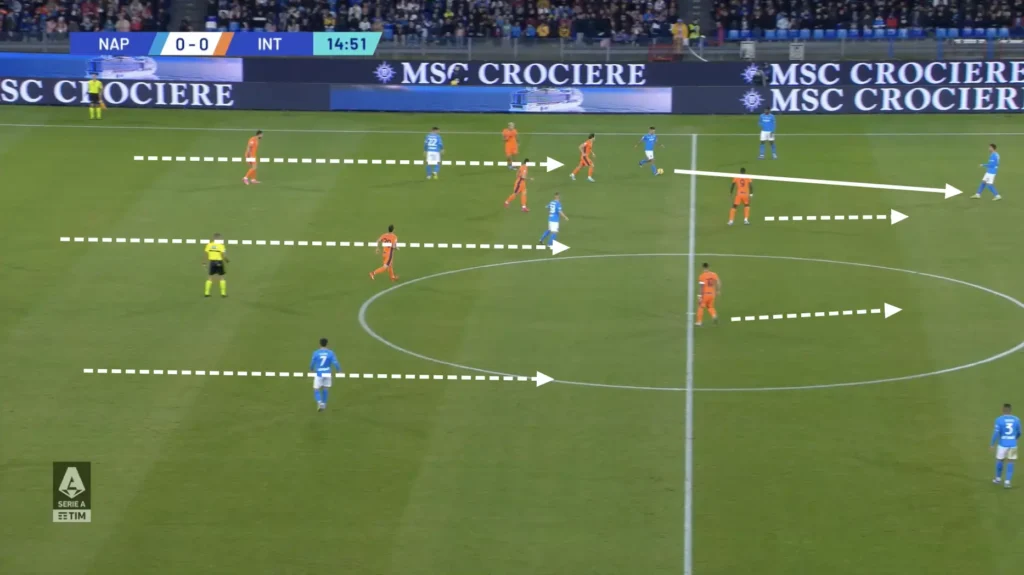
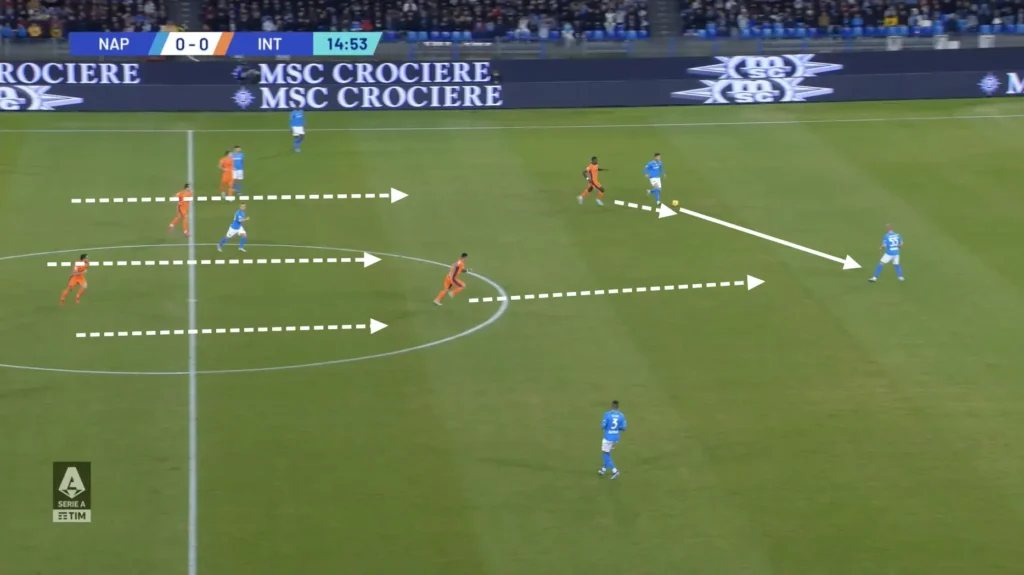
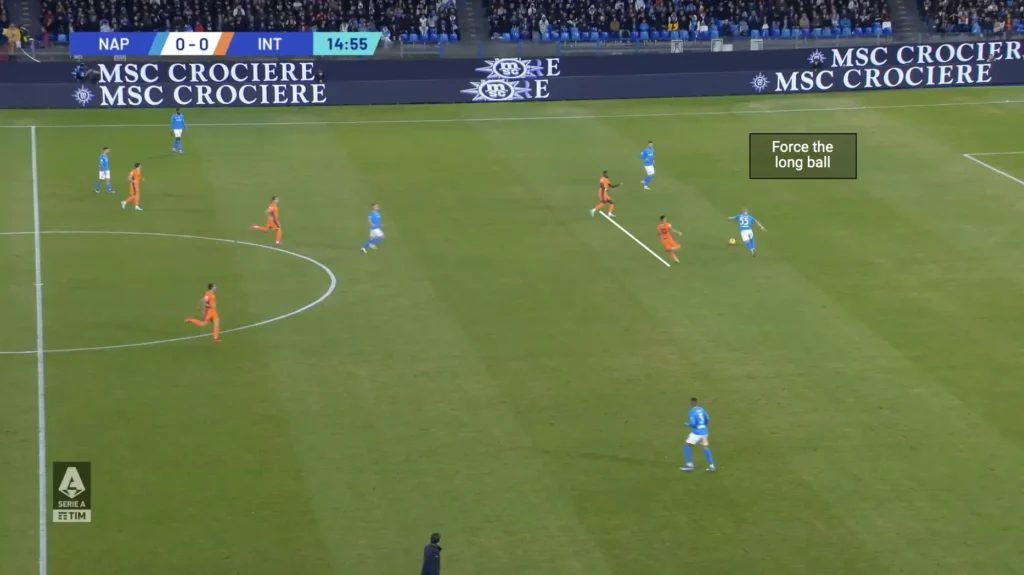
Due to Inter’s defensive formation, a potential problem when squeezing the pitch is that the opposition fullback becomes open. To solve this, Inzaghi pushes the ball-side central midfielder up on the fullback. This, however, opens the space for the opposition midfielder. To solve this, Inzaghi pushes the ball-side center-back up to him. The rest of the backline tries to stay compact while covering the space the pushing center-back has left open.
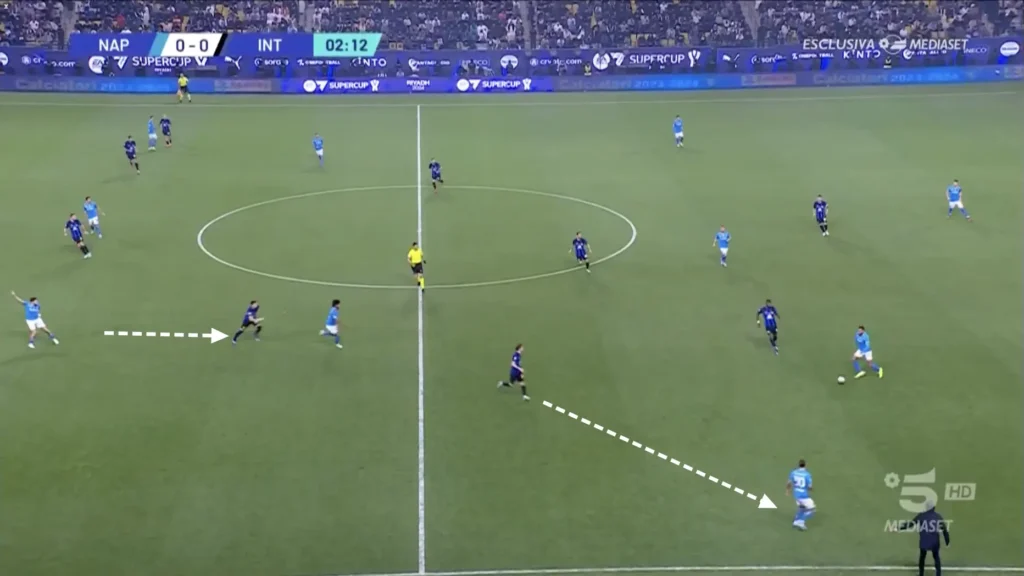
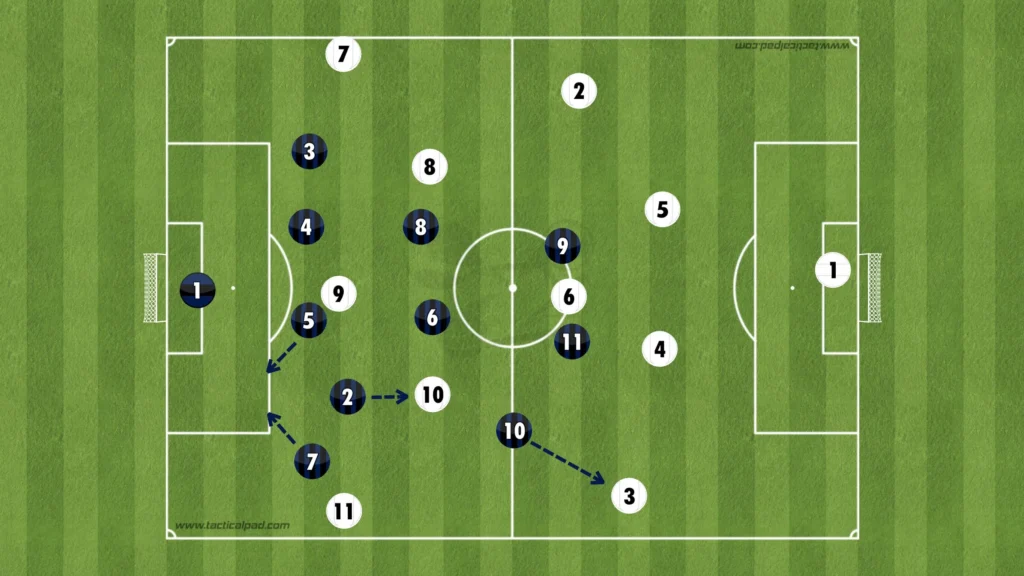
The reason for this solution, rather than pushing the wing-back on the opposition fullback, is that the center-back has to cover the opposition winger. Center-backs are usually slower than wing-backs/fullbacks and defend worse in 1v1 situations against wingers.
High Press
Inter either set up in a low-block or they press high. In the high press, Inzaghi wants his team to go man-to-man, pushing the center-back up on a midfielder and the midfielder to the fullback. In a man-to-man system, it becomes crucial that the players on the opposite side from where the ball is do not continue to mark the opponent they initially were responsible for. The pass from one side to the other is too difficult for the ball-holder to make, meaning they do not need to mark their player as closely. They can instead come in and help create numerical superiorities in the center, decreasing the risk of dangerous 1v1 situations.
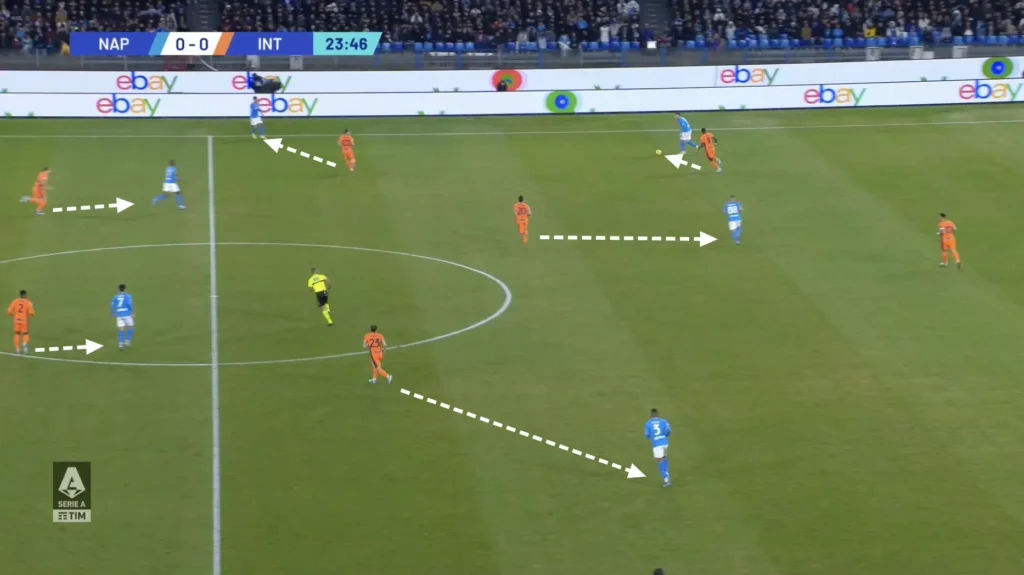
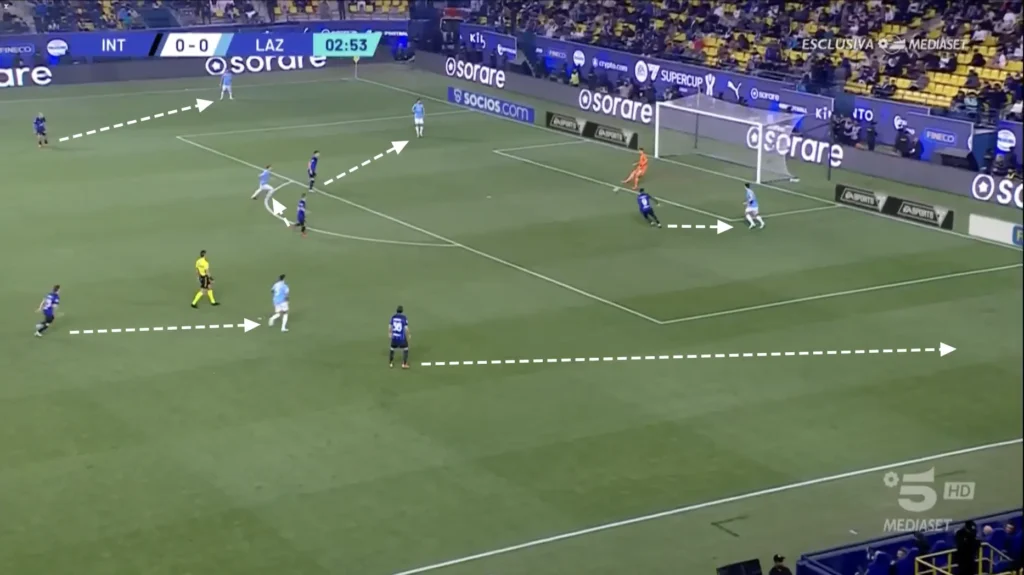
Transitions
Defensive Transitions
Positioning many players centrally, creating a numerical advantage in the midfield, creates good conditions in defensive transitions. Many players close to the ball after losing possession means that many players can work towards regaining possession. Inter, therefore, often succeeds in regaining possession directly after losing it.
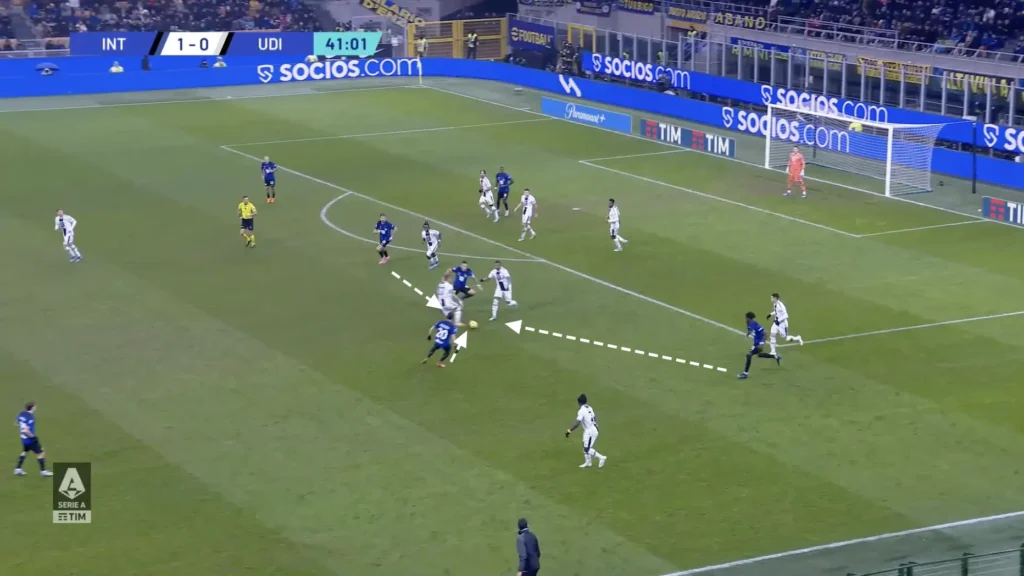
Because of having a back three, they usually succeed in defending counterattacks as well. They get many players back and favorably protect the center, not allowing the opponent to attack the goal.
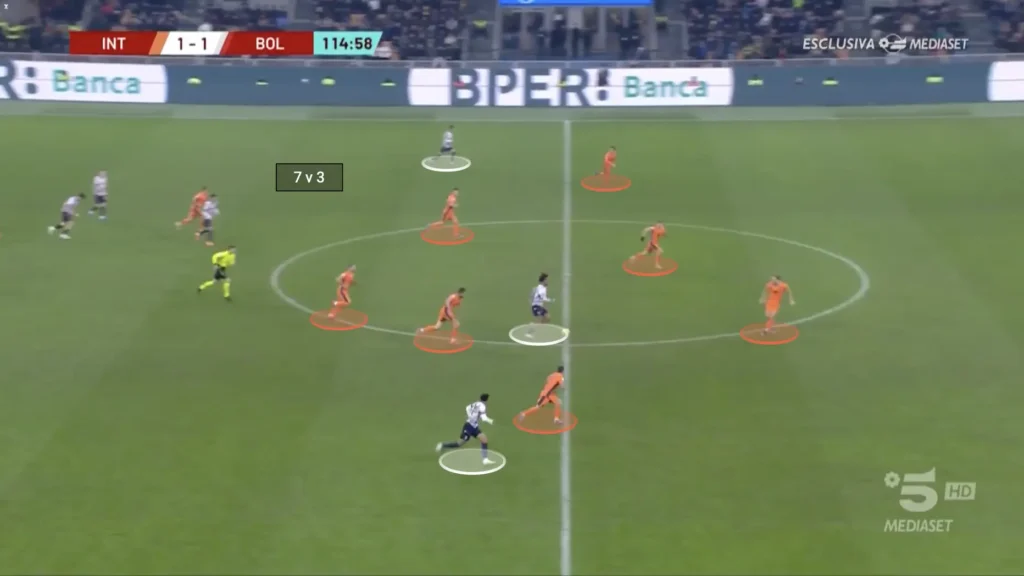
Offensive Transitions
Inzaghi also wants his team to counterattack in their offensive transitions. They do this with a high tempo, often attacking the spaces between the center-backs and fullbacks. In addition, keeping many players centrally while defending enables them to incorporate more players into the counterattacks.
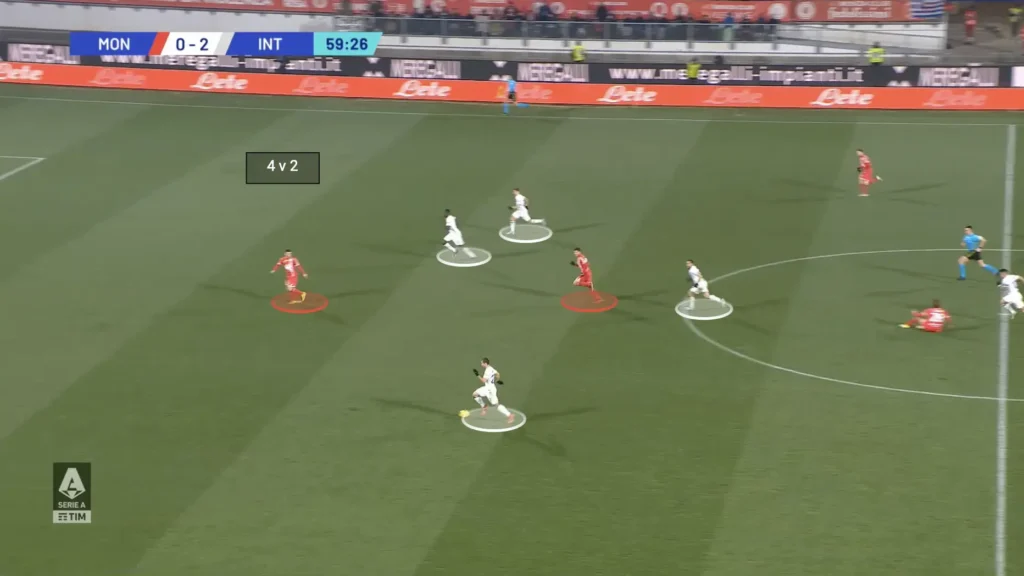
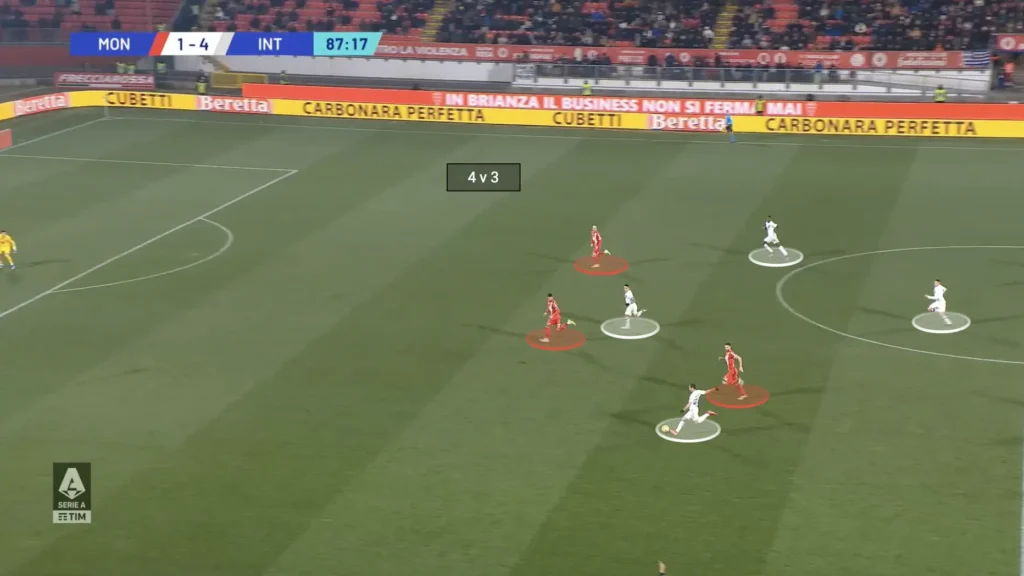
Final Thoughts
In conclusion, this tactical analysis of Inter Milan under Simone Inzaghi sheds light on the strategic nuances that define their style of play. From the meticulous build-up phases to the dynamic attacking strategies and disciplined defensive structures, Inzaghi has brought a distinct tactical identity to Inter. The adaptability displayed in different phases of the game reflects the team’s versatility and the manager’s astute approach. As Inter continues its journey under Inzaghi’s guidance, the tactical evolution observed in this analysis underscores the team’s resilience and ability to compete at the highest level. Inzaghi’s tactical brilliance positions Inter Milan as a formidable force in modern football, promising exciting developments for fans and enthusiasts alike.
